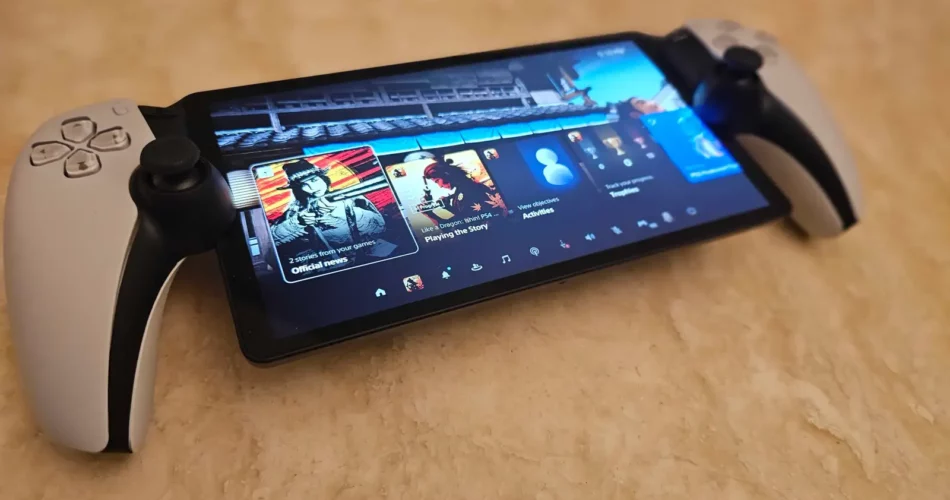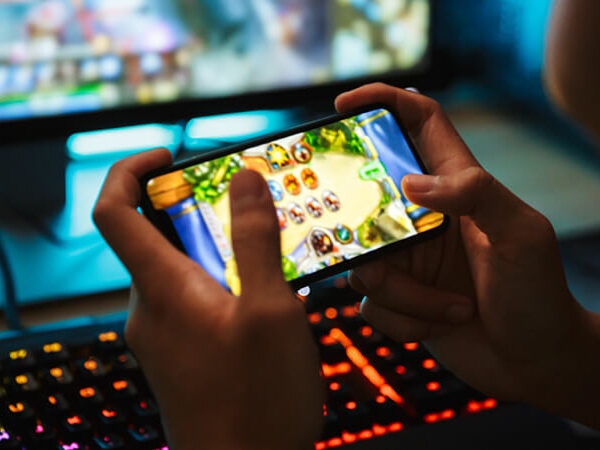I must confess, my expectations for the PlayStation Portal weren’t exactly soaring.
All I really wanted was the ability to enjoy Yakuza and Spider-Man 2 from the comfort of my bed without shelling out over $500 for a Steam Deck. Unfortunately, my chunky phone doesn’t accommodate the Backbone or other snap-on game controller accessories. With both a Switch and a Switch Lite in my possession, I wasn’t seeking a dedicated portable gaming device or a new library to build. Yet, Sony’s peculiar-looking handheld closely mirrors the PS5 experience and surprisingly kept my hands comfortable even during lengthy gaming sessions. So, it checks many of the boxes I had in mind.
It’s important to clarify that the Portal is a wireless PS5 accessory, not a portable PS5. This does limit its appeal somewhat, although the relatively low entry cost of $199 helps mitigate this. Unlike devices like the Logitech G-Cloud, you can’t stream games from the cloud with the Portal, nor can you download games to it like you can with a Nintendo Switch or Steam Deck. You already need to own a PS5 console to use it, and using the Portal won’t allow simultaneous play on TV and handheld.
I’ve previously discussed the Portal’s appearance and feel—it looks unconventional but feels comfortable. Setting it up straight out of the box is theoretically simple: connect it to your home Wi-Fi network, adjust some settings on your PS5, and you’re ready. However, in practice, expect to spend around 30 minutes dealing with software updates, logging into your PS account, and potentially updating your PS5, if you’re like me and don’t use it daily.
During several days of testing, I encountered only one connection hiccup while playing Like A Dragon: Ishin. I suddenly lost connection to my PS5 while wandering around Kyoto looking for a fight. Reconnecting was a breeze, requiring just a press of the X button, and I was back in the game without any significant disruption.
Game-switching on the Portal works just like it does on the PS5. While visually demanding games like Spider-Man 2, The Last of Us Part I, and Final Fantasy XVI take a moment to load, they run smoothly once launched, with no noticeable lag (though my gigabit internet and one-bedroom apartment setup may contribute to this). Although it lacks a top-spec OLED, the Portal’s 8-inch, 1080p LED screen delivers crisp, vibrant visuals—a clear improvement over my aging mid-range TV. However, the screen’s glossiness makes it prone to fingerprints and glare, especially in brighter conditions. Some games, like FFXVI, aren’t optimized well for handheld play, with small text becoming illegible on the 8-inch screen.
The Portal’s handles are slightly shorter than those of the standard DualSense, requiring some adjustment, particularly when playing lying down or using the touchscreen—a substitute for the DualSense’s touchpad. Despite its clumsiness and lack of clear explanation, the touchpad functionality isn’t a dealbreaker. It’s also worth noting that accessing the main menu or accidentally triggering photo mode in games like Spider-Man 2 can be frustrating due to the touchpad’s sensitivity.
One inconvenience is that the Portal requires you to be logged in to access your PS5. If you use your PS5 regularly, this isn’t an issue, but occasional users may find it disruptive, requiring them to briefly power on the console to use the Portal. Although understandable, it’s a potential inconvenience that may hopefully be addressed through a settings tweak or software update in the future.
Despite these minor drawbacks, my experience with the Portal has been largely positive. I managed about six hours of gameplay on a single charge, with battery life to spare—a commendable feat for a sub-$200 device. It’s an excellent option for the gamer in your life who monopolizes the TV when you’re itching to catch up on your favorite shows or sports.



